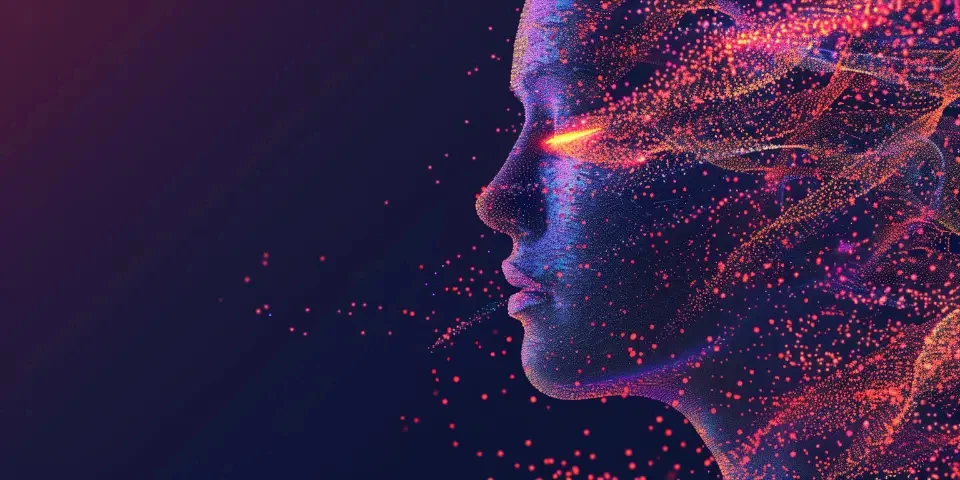From YouTube to Netflix AI That Watches Videos and Takes Notes As You Binge
In the era of binge-watching, videos have become a ubiquitous form of entertainment. From YouTube tutorials to Netflix series, people spend countless hours consuming video content. But what if there was a way for an AI to watch these videos and take notes for you? Enter the world of AI-powered video summarization and analysis, where algorithms can watch videos, extract key information, and provide concise summaries. Let's dive into how this technology works and its implications for the future.
The Rise of AI Video Summarization
AI video summarization is a field of research that aims to automatically generate summaries of video content. This technology utilizes machine learning algorithms to analyze videos frame by frame, identifying important scenes, objects, and actions. By using deep learning techniques, AI models can understand the context and extract relevant information from the video.

The applications of AI video summarization are numerous. Imagine a student who wants to quickly review a lecture without re-watching the entire video or a content creator who desires to analyze audience reactions to their videos. AI video summarization can provide a solution to these scenarios by condensing hours of video content into a few minutes of highlights.
The Process of Video Summarization
AI video summarization involves several steps to extract the most significant information from a video:
- Video analysis: The algorithm breaks down the video into frames and analyzes each frame for relevant objects, scenes, and actions. This process uses computer vision techniques to understand the visual content.
- Feature extraction: The algorithm extracts key features from each frame, such as objects, facial expressions, or text. This step helps in identifying important elements for the summarization.
- Scene detection: The algorithm groups frames into scenes based on visual and auditory cues. This enables the AI to identify transitions, cuts, and significant changes in the video.
- Keyframe selection: The algorithm selects representative frames from each scene to create a concise summary. These keyframes capture the essence of the video and provide an overview of the content without the need for extensive viewing.
- Text and audio analysis: The algorithm analyzes any text or audio within the video to extract relevant information like subtitles, dialogue, or voice-over narration.
By combining these steps, AI video summarization algorithms can generate accurate and informative summaries that capture the essence of a video.
AI Video Summarization in Action
Several applications and tools leverage AI video summarization to enhance video consumption and analysis:
- Vocalmatic: This software utilizes AI to generate automatic video transcripts and summaries. It enables content creators, researchers, and video editors to easily navigate and search through extensive video footage.
- Vidrovr: Vidrovr is a platform that automatically generates video highlights by analyzing the content and extracting the most important moments. It enables users to quickly review long videos for relevant information and saves time.
- Twitch Clips: Twitch, a popular live streaming platform, leverages AI video summarization to create short clips from longer streams. This feature enables streamers and viewers to share the most exciting moments of a live stream easily.
These examples showcase the transformative potential of AI video summarization in various domains, providing users with more efficient ways to consume and analyze video content.
The Implications and Challenges of AI Video Summarization
While AI video summarization offers many benefits, there are also challenges and considerations to be aware of:
- Privacy concerns: Since video summarization algorithms analyze the content frame by frame, there can be potential privacy concerns if sensitive information is captured and stored. It is crucial to ensure robust data protection mechanisms to address these concerns.
- Bias and accuracy: AI algorithms are not perfect and can be biased or inaccurate in their analysis. This raises concerns regarding the reliability and fairness of the generated summaries. Continuous improvement and rigorous evaluation of the algorithms are necessary to mitigate these biases.
- Complex content: Some videos, such as documentaries or educational lectures, contain complex information that may require additional context or explanation. AI video summarization algorithms may struggle to capture the full depth and nuance of such content, limiting their effectiveness in these scenarios.
Addressing these challenges will be crucial for the widespread adoption and improvement of AI video summarization technology.
Frequently Asked Questions
1. How accurate are AI video summarization algorithms?
AI video summarization algorithms can achieve high accuracy in identifying important scenes and objects. However, the accuracy can vary depending on the complexity and diversity of the video content.
2. Can AI video summarization replace manual video editing?
While AI video summarization offers automated summarization capabilities, it cannot fully replace manual video editing. Professional video editing requires creative decision-making and storytelling skills that AI algorithms currently lack.
3. Are there any limitations to the length of videos that can be summarized?
AI video summarization can be applied to videos of varying lengths. However, longer videos may require more processing time, and the resulting summaries may be relatively longer to encompass essential information.
References:
[1] R. K. Panda, R. R. Sahoo, N. Revanna, and S. S. Rath, "A Survey on Automatic Video Summarization Techniques," in International Journal of Advanced Computer Science and Applications, vol. 6, no. 4, pp. 180-186, 2015.
[2] M. Gygli, H. Grabner, H. Riemenschneider, and L. Van Gool, "Creating Summaries from User Videos," in Computer Vision and Image Understanding, vol. 150, pp. 109-121, 2016.
Explore your companion in WeMate